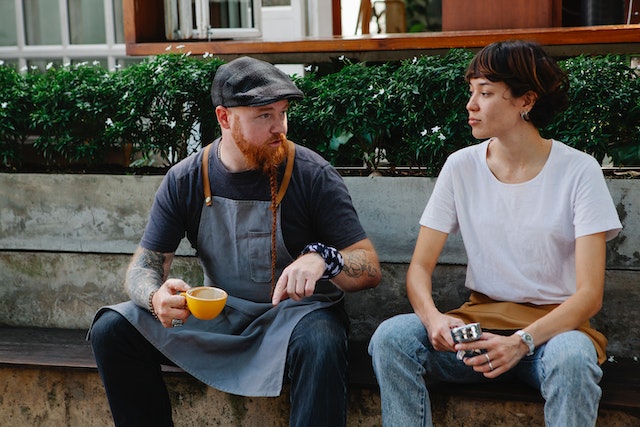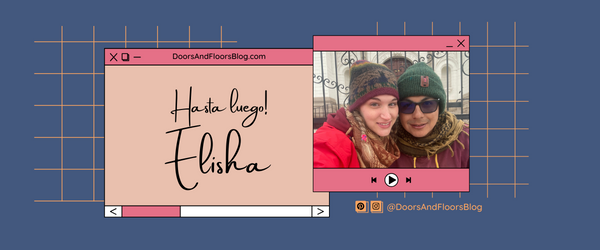
If I could give you one tip for how to learn a bunch of Spanish words very quickly that you personally will use and will improve your conversational Spanish: Focus on learning Spanish words associated with your favorite hobbies.
Let’s be real for a second, as human beings, we tend to talk a lot about the things we really like, and the things we really don’t like. Learning how to complain in another language may not be the best first step for your language-learning journey. However, if you’re looking for ways to quickly improve your conversational Spanish and learn words you can use right away. Focus on the former by learning words to talk about the things you really like and already love.
When you get into everyday conversations with people and are making new friends, people like to get to know you and the things you like. A question that may come up could be something along the lines of, “¿Qué te gusta hacer en tu tiempo libre?” (What do you like to do in your free time?)
It’s a basic conversational question that could be asked of you quite often. Especially if you’re living in or are traveling through a foreign country. When you meet people who are different than you, they often want to get to know you and your culture, just the same as you want to learn about them and theirs.
Learning how to talk about your hobbies in your target language, whether that’s Spanish, French, or something else, will greatly increase the duration of these conversations you’re having. You don’t have to know all the words on the planet in this language. Simply start by learning enough to talk about the things you’re passionate about. The more you talk about it, the more you’ll learn and grow your vocabulary.
Learning words associated with your hobbies will be easy to pick up quickly simply because it’s a topic you’re passionate about. Don’t worry if you don’t know all the words when you start talking about your hobbies either. You can always mime the word and those around you are sure to teach you the words you’re missing!
Small Talk

Small talk is often done when trying to pass the awkward time between two people, or at the beginning of building relationships. In short, it usually sucks. Especially when you’ve just begun your Spanish learning journey. It’s here when our conversational Spanish, or awkward Spanish small talk is pretty much limited to the following three sentences:
- Hi, how are you? – Hola, ¿como estas?
- How old are you? – ¿Cuantos años tienes?
- What’s your name? – ¿Cual es tu nombre?
It’s rough, and the beginner steps we all must pass through. But we’re cool. We’re eager to learn and grow over here.
So, along with learning how to talk about tus pasatiempos (your hobbies or, time passers), you should know how to ask others about theirs as well. This will help you not only be polite in conversations but also presents opportunities for you to learn some new words about other hobbies.
To expand your learning a little, try memorizing one of these questions to ask during small talk:
- What do you do for fun? – ¿Qué haces para divertirte?
- Do you have a hobby? – ¿Tienes algún pasatiempo?
- What is your favorite hobby? – ¿Cuál es tu pasatiempo favorito?
Lunch With My Suegra

Conversations across the table are some of the most no-pressure, comfortable places to chat when practicing your beginner Spanish.
Conversing over food is usually pretty easy to do. From compliments on the meal to questions about your week. These settings are usually pretty relaxed and easy enough to keep up with and participate in. If you’re stressed about finding a good place to practice your conversational Spanish, try talking to friends or family during a meal. It’s more relaxed because there’s an activity – food – between you. Meaning conversations don’t move too fast. And when in doubt about what to say, just comment on the food in front of you. Or eat your food so you don’t have to talk at all.
You, of course, already know all your food words because you read the post, 12 Ways To Improve Spanish Without An App, and the post, How To Improve Beginner Spanish With 10 Easy Categories. Wherein, these two posts gave you the idea and encouragement to practice learning your fruits, veggies, and cooking utensils. Way to go you – thinking ahead!
When I have lunch with my Suegra (Mother-In-Law) we chat about many things – all in Spanish – but, she knows I like to sew, so conversations often sway in that direction. She asks what I’m working on or where we bought certain fabrics. I tell her I’m sewing zippers and buttons and show her my projects, like this Statement Pants.
It is very easy for me to have long conversations about this topic because I already love this topic. I, like a kid in the candy store, excitedly show her pictures of all my creations and tell her about my current projects.
This is significant because my Spanish is mas o menos (so, so) and she doesn’t speak English. We have something we can easily chat about together. We’re able to because my passion for this topic puts fuel on the fire of my learning these words.
It is easier to learn something when you are passionate about it. While learning a language is hard, finding ways to bring your passions into your language learning greatly improves the process.
Practical Conversations Outside Of Family

Want to learn ways to take your conversational Spanish beyond dinner conversations with your family? Learn how to shop for your hobbies in Spanish.
Sewing is a huge activity in my life. To shop for fabric in Perú, I need to know common words associated with my hobby. Just on the basic level, I need words like fabric, thread, and needles.
I don’t go shopping in English when I go to this market. Nobody would understand me if I asked for a yard of linen or cotton. I need to know how to speak Spanish to not only get there but to also shop for specific things for my hobby. To learn where I do this, check out my tour of The Best Place To Go Fabric Shopping In Perú.
To take this one step further, I know what type of fabric or zippers I need. Maybe a detachable zipper or an invisible one. Maybe I want corduroy, cotton, or satin material. Walking into the market and simply asking for fabric may get me to the right place, but it isn’t going to help me find what I specifically want. I know what specific types of materials I want because I know fabrics just by looking at a shirt or dress. This isn’t my husband’s hobby. He doesn’t know all the materials the same way I do. With English being his second language, he doesn’t use words like twill and polyester often, so the Spanish word for these doesn’t immediately come to him. When I want something specific I have to research and find the word in Spanish so I can explain to him what I’m looking for.
Some common words I learned from my hobby:
- Fabric – Telas
- Thread – Hilo
- Cotton – Algodón
- Corduroy fabric – Tela de corduroy
- Zipper – cierre
- Pants zipper – cierre de Pantalón
- Meter – metro (about 1.33 yards…ish. I still don’t get it, and I always buy too much fabric)

In the States, I can easily walk into a craft store and get directions to proper aisles. Here, to do the same thing, you need to know the proper words to get someone to point you in the right direction.
While a simple Google translation may help put you on the right path, it doesn’t always give you a proper, accurate, or perfect translation. Be aware that things in real life may be different, depending on where you are or what version of Spanish the people around you speak.
Get Excited

Whether the things that get you most excited are Fútbol (soccer), pintura (paint) or cocinando (cooking), learn the words for them. Soak up as much as you can in your target language, about the things that make you happy.
Learn how to tell your best friend passionately about the things that you love. Then learn how to go shopping for those things in your target language. Get excited!
If you’re trying to find ways to remember these words, swap them out for the other word in your everyday conversations. It is perfectly acceptable to swap out the Spanish word for the English one. Even if that makes your sentence sound just a little funny. Swapping out the words will help your brain to remember this new language better.
By slowly introducing a new language into your everyday life, you create practical, applicational, conversational Spanish. Even if it is only one Spanish word in the middle of your sentence at a time. One word is a step in the right direction.
Did you find this conversational Spanish tip helpful? If you did, let me know in the comments what your favorite hobby is in Spanish (or whatever language you’re learning). Personally, me gusta coser (I like to sew). But you already knew that.
If you also like to sew or are looking for more Spanish tips and tricks – check out these posts!
- How To Tell Someone You Love Them In Spanish
- How To Talk About Pain In Spanish: Vocabulary Lessons
- How To Sew An Easy Reversible Corset Belt
P.S. Looking for a fun activity to play while traveling to your next adventure? We put together a great freebie that you can play with your seatmate on a plane, train, or long bus ride, download your free trivia here. It’s a great activity to do when you’re taking breaks from learning a new language.
Playing trivia is a great way to participate in fun activities with your friends and family, even when you’re 4,591 miles apart or constantly on the go. It helps you keep your long-distance relationships growing and is sure to provide lots of fun!
Be sure to check out the free Trivia by clicking here!







